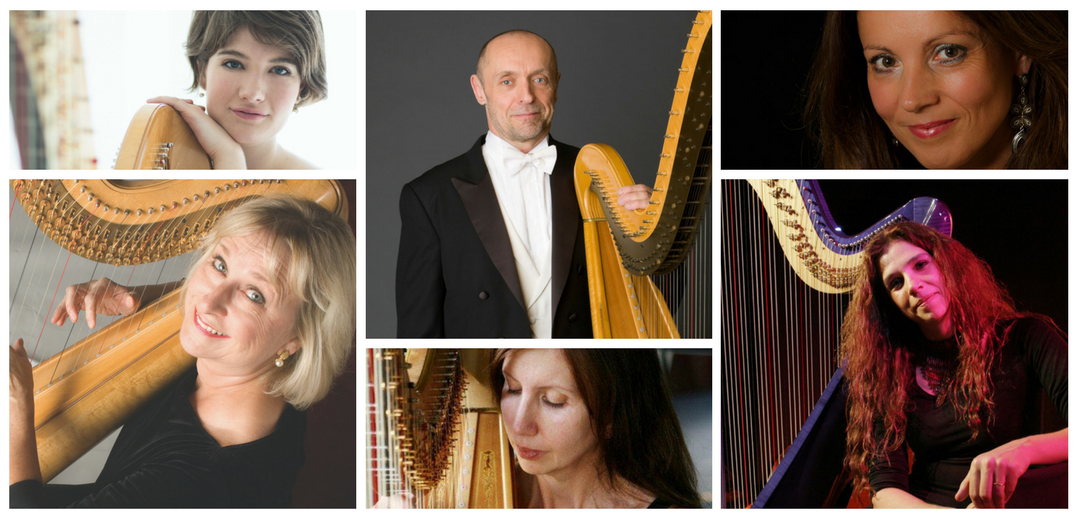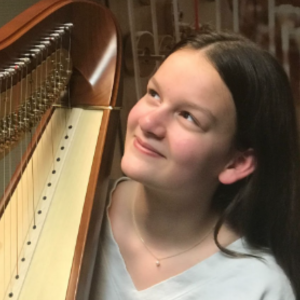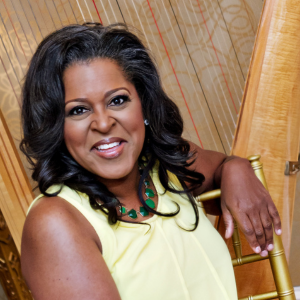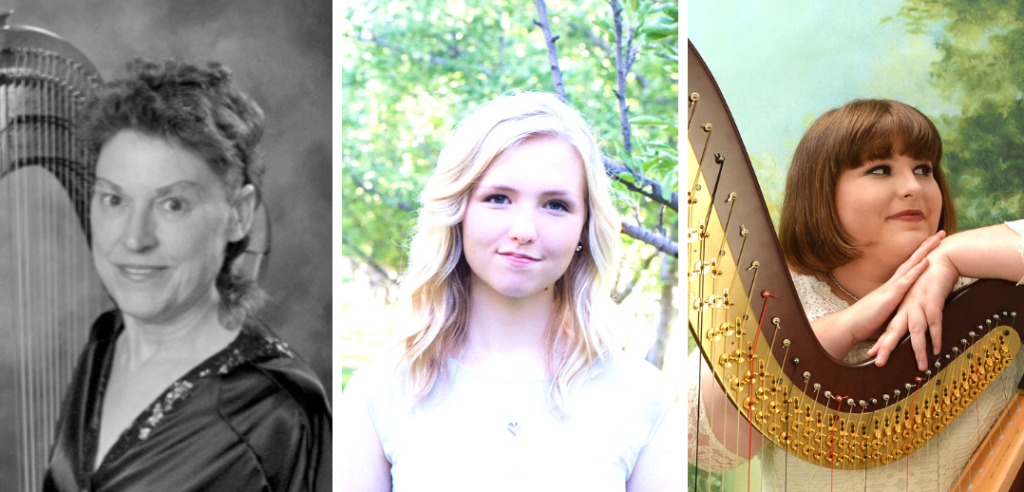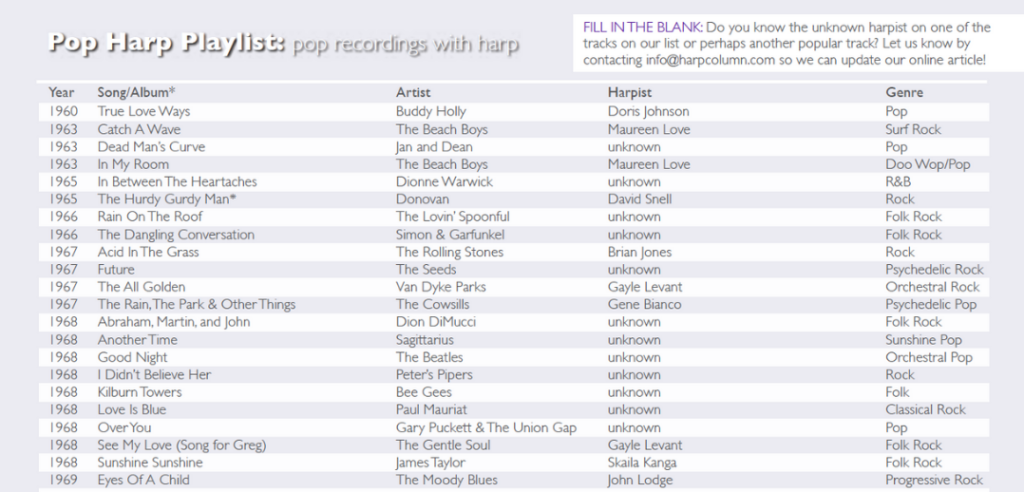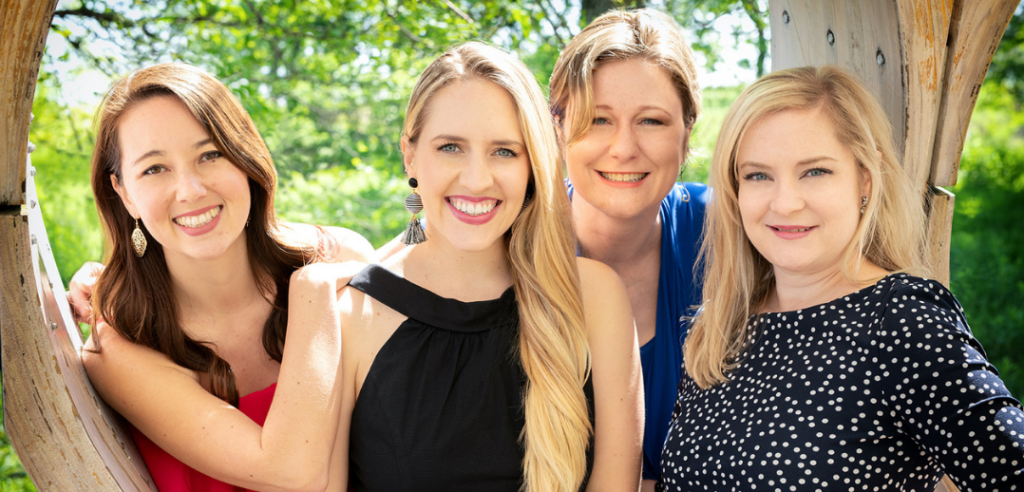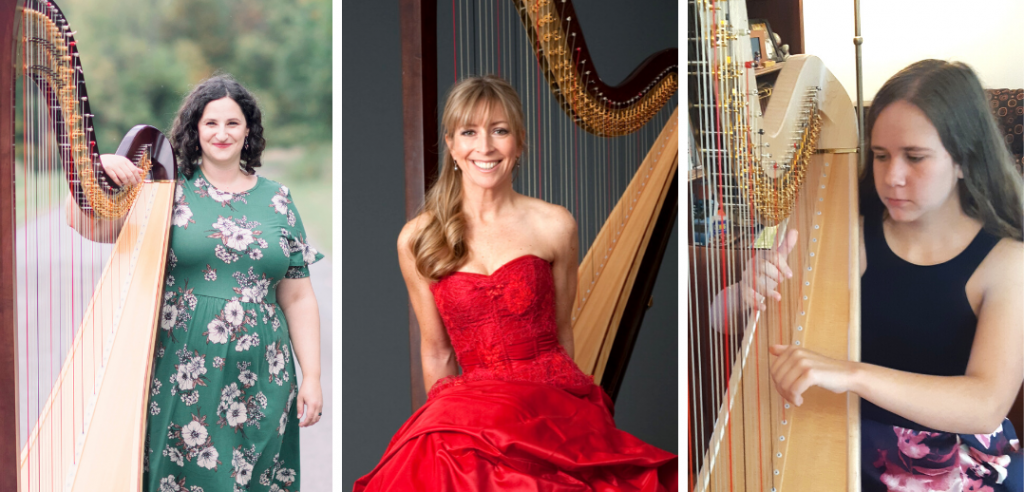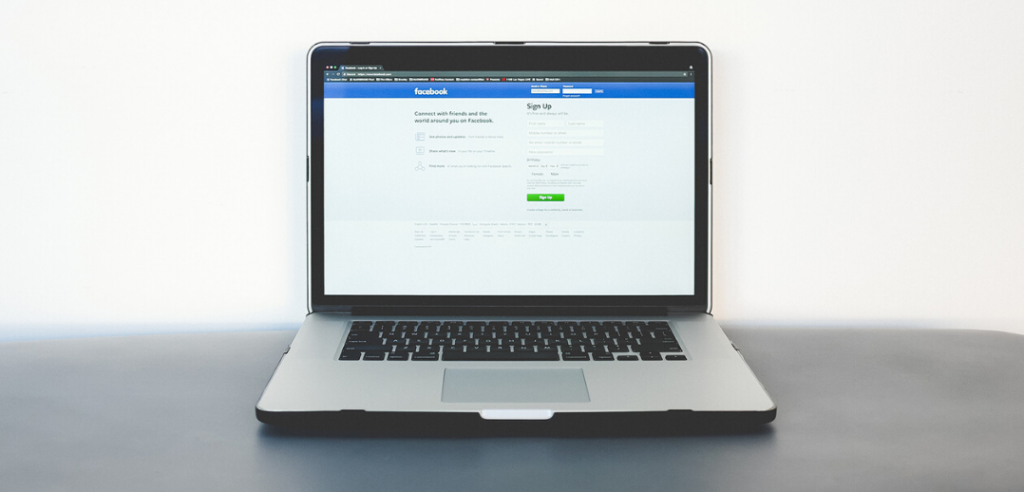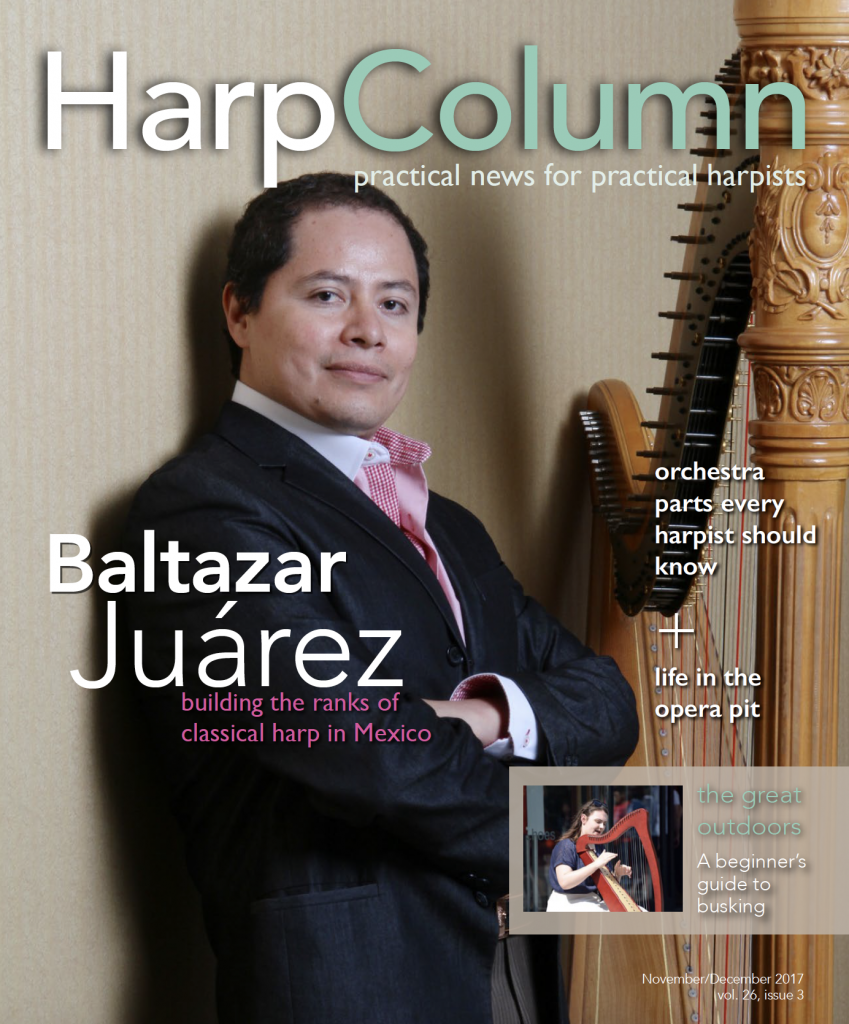(Clockwise from top left: Emily Levin; Douglas Rioth; Ellen Versney; Cristina Braga; Louise Johnson; and Paula Page.)
Article Extra
This story is a companion to Top Ten Most Wanted Orchestra Harp Parts in this issue.
Emily Levin, principal harpist, Dallas Symphony Orchestra
“(Bartok’s Concerto for Orchestra) was my first piece with youth orchestra—yikes! For such a small notes-to-rests ratio, it’s amazing how much of it is on auditions. I find the audition excerpt bits in the first, fourth, and fifth movements much more enjoyable to play in orchestra after drilling them in a practice room.”
Only on her list: Strauss — Death and Transfiguration
“The harp is exposed from the beginning, and you have to shape the accompaniment. Additionally, it also helps you practice hearing a melody in your head while playing your part, which is always great to learn.”
Douglas Rioth, principal harpist, San Francisco Symphony
Only on his list: Mahler — Das Lied Von Der Erde
“A part that is often on auditions, and is very important to learn is Mahler’s Das Lied Von Der Erde. The last movement #6, from 58, the Langsam section is quite rubato when actually performed, but the harpist should be able to play it beautifully, in perfect rhythm. Only after mastering rhythmic perfection can it be played with freedom. This part I recall being used to test the harpist’s ability to follow the conductor.”
Ellen Versney, principal harpist of the Radio Philharmonic Orchestra of The Netherlands
“As a radio orchestra, we play a fair amount of unknown and new repertoire, quite a number of opera performances, but also a lot of ‘standard’ symphonic music, especially the works for large orchestra. There are some noticeable differences in our list.
Only on her list: Prokofiev — Romeo and Juliet
“Conductors love to make their own mix of the two suites, and the public always loves this music. It comes by every season too.”
Cristina Braga, principal harpist, Symphony Orchestra of the Municipal Theatre of Rio de Janeiro, Brazil
“It is important to master the piece in order to approach a cadenza or an exposed excerpt with the joy of a jazz or popular musician when your solo comes—Yes! Now it’s my turn! “
Only on her list: Glazunov — cadenza from Raymonda ballet
“If you are playing with an opera and ballet orchestra, you should prepare for this. It’s a true soloist experience. The orchestra stops and the harp plays. It is almost a harp concerto.”
Louise Johnson, principal harpist, Sidney Symphony Orchestra
“I truly feel that Beatrice Schroeder Rose’s book (The Harp in Orchestra) is an excellent resource for a few of the excerpts. She has offered some interesting tips and insights. I love that she contacted Peter Bartok to discuss the hideous passage in the Second Violin Concerto, and that together, they discovered there were wrong notes.”
Only on her list: Janacek — Sinfonietta
“I feel that it probably needs more work than some of the others for the level of difficulty and frequency it’s performed.”
Paula Page, former principal harpist with Houston Symphony and Associate professor of harp, Rice University
“The second movement (of Symphonie Fantastique) is on every orchestra audition, so you should know it for that reason alone, but it also demonstrates excellent, even-sounding fingers at a fast tempo.”
Only on her list: Wagner – Overture to The Flying Dutchman
“It has fast and demanding pedal changes that demonstrate (the harpist’s) ability to move pedals quietly.”






